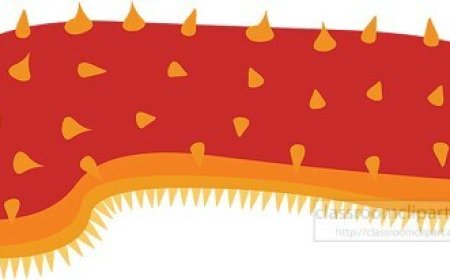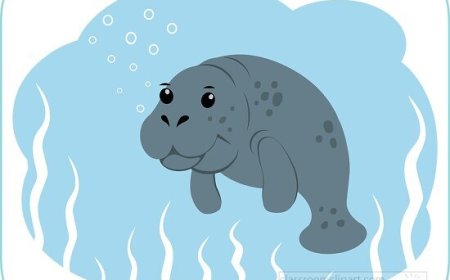Shrimp Facts for Kids – Small but Mighty Ocean Helpers
Learn about shrimp for kids. Discover how they live, what they eat, and why they are important to ocean life.
🦐 Shrimp: Small but Mighty Ocean Helpers
Shrimp may be small, but they are some of the most important creatures in the sea. These crustaceans are found in oceans, rivers, and lakes all over the world, and they play big roles in food webs, cleaning, and even construction!
There are over 3,000 species of shrimp, and they come in many shapes, sizes, and colors. Some live deep in the ocean, others clean fish at coral reefs, and some even fire powerful bubbles with their claws!
🌍 Where Shrimp Live
Shrimp live in many different aquatic environments:
- Oceans, from shallow coral reefs to the deep sea
- Estuaries, where rivers meet the sea
- Freshwater lakes and rivers
Most marine shrimp stay near the ocean floor, hiding in sand, rocks, or coral. Some shrimp live in burrows, and others team up with different animals to share a home.
🧬 Body Features and Adaptations
Shrimp are crustaceans with flexible, segmented bodies. Their body parts include:
- A head with long antennae for sensing the environment
- A thorax with legs and claws (some species have one large claw)
- An abdomen with swimmerets for swimming and carrying eggs
- A tail fan that helps them flick away from danger
Their body is covered by a thin exoskeleton, which they shed to grow. Shrimp use their legs for walking and swimming, and many can swim backward quickly using a flick of their tail.
🍴 Feeding and Diet
Shrimp are usually omnivores and scavengers, meaning they eat:
- Algae and plankton
- Detritus (dead plants and animals)
- Small invertebrates
- Worms and fish larvae
Some shrimp are cleaners, like the cleaner shrimp, which set up “cleaning stations” where they pick parasites off larger fish!
Other species, like the pistol shrimp, have a claw that creates a shock wave to stun prey.
🤝 Teamwork and Behavior
Shrimp are often social and live in groups. Some form symbiotic relationships with other animals. For example:
- Cleaner shrimp clean moray eels and groupers, who don’t eat them
- Pistol shrimp share burrows with goby fish—shrimp digs, goby keeps watch
Shrimp communicate with each other using body movements, antennae flicks, and even sound (like the loud “pop” of the pistol shrimp).
🔁 Molting and Life Cycle
Shrimp grow by molting, just like other crustaceans:
- They shed their exoskeleton
- A soft new shell grows and hardens
Molting happens often when they’re young and slows down as they get older.
Shrimp life cycle:
- Female lays eggs (some carry them under their body)
- Eggs hatch into free-swimming larvae
- Larvae drift as plankton, then settle to the ocean floor and mature
Most shrimp live for 1 to 6 years, depending on the species.
🛡️ Defense and Survival
Shrimp have many ways to protect themselves:
- Hiding in burrows, crevices, or under seaweed
- Transparent bodies that are hard to spot
- Quick tail flicks to escape
- Camouflage that matches the ocean floor
Some, like the pistol shrimp, use their bubble-blasting claw to scare away predators.
Shrimp are also good at sensing danger with their long antennae and eyes on stalks.
⚠️ Threats and Conservation
Shrimp are incredibly common, but they still face serious challenges:
🚨 Threats:
- Overfishing, especially for commercial shrimp
- Bycatch, where shrimp are caught with other unwanted animals
- Habitat destruction, like mangrove cutting and coral reef damage
- Pollution from plastics, oil, and chemicals
- Climate change, which affects water temperature and food availability
🛡️ Conservation efforts:
- Sustainable shrimp farming (aquaculture)
- Fishing regulations and bycatch-reduction devices
- Marine protected areas
- Cleaner fishing practices and gear
Some shrimp species, like cleaner shrimp, are also protected in reef reserves due to their importance to fish health.
🎉 Fun Facts About Shrimp
- Some shrimp can glow in the dark (bioluminescent)
- The pistol shrimp can snap its claw at 60 miles per hour, creating a shockwave and light
- Cleaner shrimp dance to attract fish to clean
- Shrimp are eaten by over 1,000 species of fish, birds, and sea creatures
- Their hearts are located in their heads!
🧠 Vocabulary List
- Crustacean – A hard-shelled animal with jointed legs, like shrimp and crabs
- Exoskeleton – A tough outer shell that must be shed to grow
- Swimmerets – Tiny leg-like parts on the abdomen used for swimming or carrying eggs
- Detritus – Dead organic material shrimp feed on
- Symbiosis – A close relationship between two different animals that helps both
- Molting – The process of shedding and growing a new shell
- Camouflage – Blending into the surroundings to hide
- Larva – The young form of an animal before it looks like the adult
- Pistol shrimp – A shrimp that stuns prey with a bubble blast
- Cleaner shrimp – A shrimp that eats parasites off fish
✅ Shrimp Quiz: Flick Your Brain into Action!
1. What do shrimp eat?
A. Only meat
B. Only algae
C. Algae, tiny animals, and dead material
D. Only seaweed
✅ Answer: C. Algae, tiny animals, and dead material
2. What is a shrimp’s outer shell called?
A. Skin
B. Fur
C. Exoskeleton
D. Carapace
✅ Answer: C. Exoskeleton
3. What helps shrimp sense their surroundings?
A. Their tongue
B. Their big nose
C. Their antennae and eyes
D. Their fins
✅ Answer: C. Their antennae and eyes
4. What special skill does a pistol shrimp have?
A. Singing
B. Shooting water jets
C. Snapping a claw to make a shockwave
D. Throwing shells
✅ Answer: C. Snapping a claw to make a shockwave
5. How do cleaner shrimp help fish?
A. They swim away
B. They feed them
C. They remove parasites
D. They scare off other shrimp
✅ Answer: C. They remove parasites
🧒 Kid-Friendly Summary
Shrimp may be tiny, but they’re some of the busiest creatures in the ocean! They clean up waste, feed fish, and even team up with other animals. Some shrimp can snap their claws to make sound waves, and others dance to say “I’ll help you!”
Shrimp are everywhere—from coral reefs to deep sea trenches—and they’re very important to keeping the ocean clean and healthy.



















































